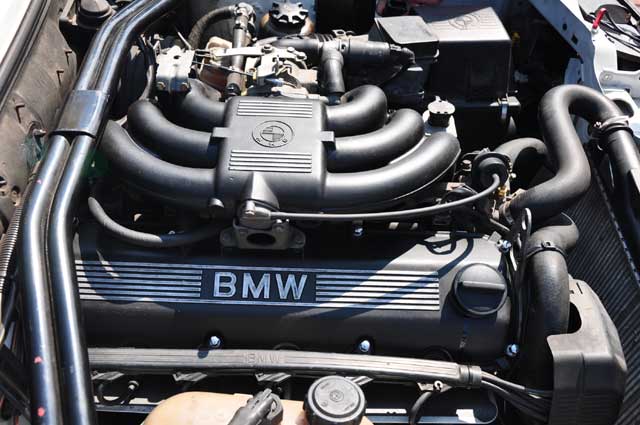Revealing the Intricacies of Next-Generation Power Units: a Deep Dive Into Advanced Engine Technologies and layouts
As we stand on the precipice of a new era in transportation, the intricacies of next-generation engine designs beckon us to check out the advanced modern technologies and innovations that guarantee to redefine the driving experience. Diving much deeper right into the worlds of exhaust control, intelligent engine monitoring systems, and the horizon of power system development, we locate ourselves on the cusp of a makeover that promises to reshape the landscape of mobility as we understand it.
Evolution of Engine Materials

The change in the direction of advanced engine products has actually also made it possible for engineers to create engines with greater power outcomes while preserving fuel performance criteria. As an example, using lightweight products reduces the overall weight of the engine, bring about enhanced gas economy and lower exhausts. In addition, improvements in products technology have permitted far better thermal management within engines, resulting in boosted integrity and durability.
Turbocharging and Supercharging Technologies
How do Turbocharging and Supercharging Technologies revolutionize engine performance and efficiency in modern vehicles? Supercharging and turbocharging are innovations that considerably enhance engine performance by raising the quantity of air intake into the burning chamber. Turbocharging accomplishes this by using a generator driven by exhaust gases to pressurize the intake air, while supercharging utilizes a belt- or chain-driven compressor to attain the exact same result.
These modern technologies make it possible for smaller, a lot more fuel-efficient engines to generate power equivalent to bigger ones, recognized as downsizing. By requiring even more air into the cylinders, turbo charging and turbocharging improve combustion performance, causing raised horse power and torque result without a considerable boost in engine dimension. This results in much better velocity, hauling capability, and overall driving efficiency.
Moreover, turbo charging and turbocharging add to enhanced gas effectiveness by permitting the usage of smaller sized engines that eat much less gas under normal driving conditions - bmw engine. This mix of improved efficiency and effectiveness has actually made turbocharging and turbo charging indispensable components of lots of modern-day engine styles
Exhaust Control and Environmental Influence
With boosting global problems concerning air quality and ecological sustainability, the execution of discharge control technologies in cars plays a critical function in reducing damaging toxins launched into the ambience. Modern cars are geared up with sophisticated discharge control systems that assist decrease the environmental influence of automobile procedures. Catalytic converters, for example, are made to convert toxic gases such as carbon monoxide gas, nitrogen oxides, and hydrocarbons into less damaging substances like carbon dioxide and water vapor.
In addition, developments in engine innovation, such as the assimilation of exhaust gas recirculation systems and discerning catalytic decrease, have actually substantially added to reducing discharges. These modern technologies function in tandem to enhance burning effectiveness and decrease the launch of harmful toxins right into the air. In addition, the advancement of crossbreed and electric cars represents an essential action towards reducing the total ecological footprint of the transportation field.
Intelligent Engine Administration Equipment

Furthermore, these systems enable vehicles to meet rigid discharges criteria without compromising performance, offering a much more eco-friendly driving experience. The combination of man-made intelligence and artificial intelligence abilities in engine management systems proceeds to press the boundaries of what is feasible, causing additional renovations in performance, integrity, and total car performance. bmw engine. As automobile innovation advancements, smart engine administration systems will certainly play an essential duty in shaping the future of transport moved here in the direction of a more sustainable and effective direction
Future Trends in Power Unit Growth
As smart engine management systems lead the means for enhanced control and optimization in contemporary lorries, future fads in power unit growth are positioned to redefine the landscape of automobile propulsion innovations. Among the vital fads driving technology in power unit advancement is the shift in the direction of electrification. With a raising concentrate on sustainability and decreasing carbon discharges, crossbreed and electric powertrains are coming to be a lot more prevalent in the automobile sector. These different power sources offer enhanced efficiency and performance while lining up with strict environmental laws.
An additional significant fad is the assimilation of innovative products and manufacturing strategies. Lightweight materials such as carbon fiber and light weight aluminum are being utilized to minimize overall automobile weight, boosting fuel effectiveness and performance. Additionally, developments in 3D printing and additive manufacturing are enabling the manufacturing of complicated engine elements with higher precision and toughness.
Moreover, expert system and my link artificial intelligence are playing a critical role in maximizing power unit performance. These innovations enable for real-time surveillance and adaptive control, resulting in much more trusted and reliable power shipment. In general, future fads in power device development are geared towards sustainability, efficiency, and read the full info here performance, driving the vehicle market in the direction of a brand-new era of propulsion modern technologies.

Verdict
In verdict, the improvements in engine products, turbocharging, emission control, and intelligent administration systems have actually paved the means for next-generation power devices. The intricate layouts and advancements in modern-day engines display the recurring evolution of vehicle technology.
Exploring the modern developments in engine materials has been essential in enhancing the performance and effectiveness of modern-day engines. Over the years, the development of engine materials has played an essential duty in pushing the borders of what engines can attain.The change towards advanced engine materials has actually likewise enabled designers to create engines with higher power results while keeping gas performance standards.The implementation of smart engine management systems in modern cars has changed the way engines are regulated and enhanced for performance and efficiency. By gathering data in real-time and assessing it with innovative formulas, intelligent engine management systems can adapt to driving styles, environmental elements, and engine health to take full advantage of power outcome while lessening fuel intake and emissions.